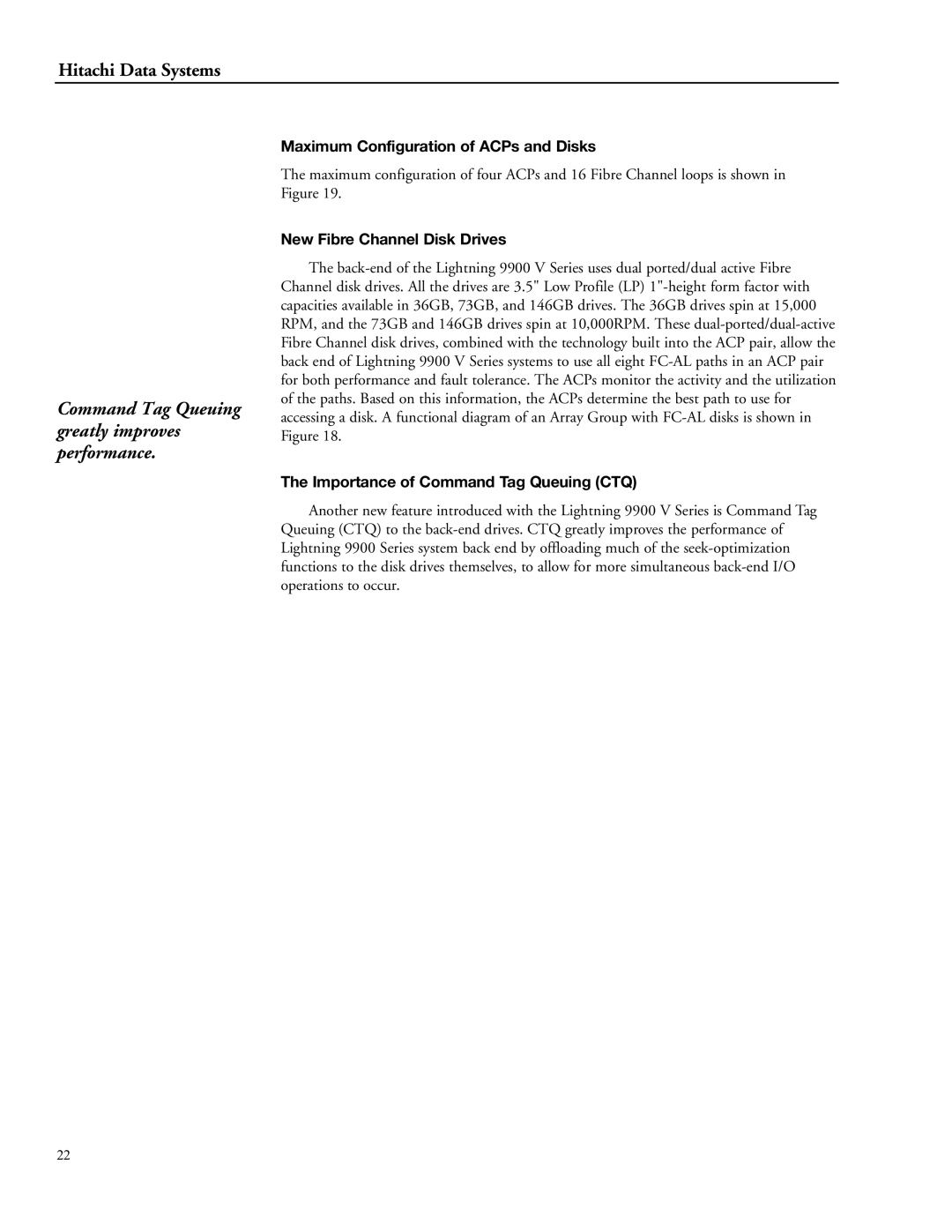Hitachi Data Systems
Command Tag Queuing greatly improves performance.
Maximum Configuration of ACPs and Disks
The maximum configuration of four ACPs and 16 Fibre Channel loops is shown in Figure 19.
New Fibre Channel Disk Drives
The
The Importance of Command Tag Queuing (CTQ)
Another new feature introduced with the Lightning 9900 V Series is Command Tag Queuing (CTQ) to the
22
